Detroit Collaborations: Paula Schubatis
In the fall of 2014, Paula Schubatis (Stamps BFA ‘13) was invited to be a Michele Schara Artist in Residence at one of Stamps’ partner schools, Detroit Community High School (DCH).
During the four months of her residency, Paula set up her studio in the loft space of the DCH art classroom as a place to create work, collaborate and dialogue with the students. Now Paula is continuing the collaboration by teaching three art classes at the high school this semester.
We talked to Paula about her engagement with the city of Detroit and the evolution of her creative practice as a teaching artist.
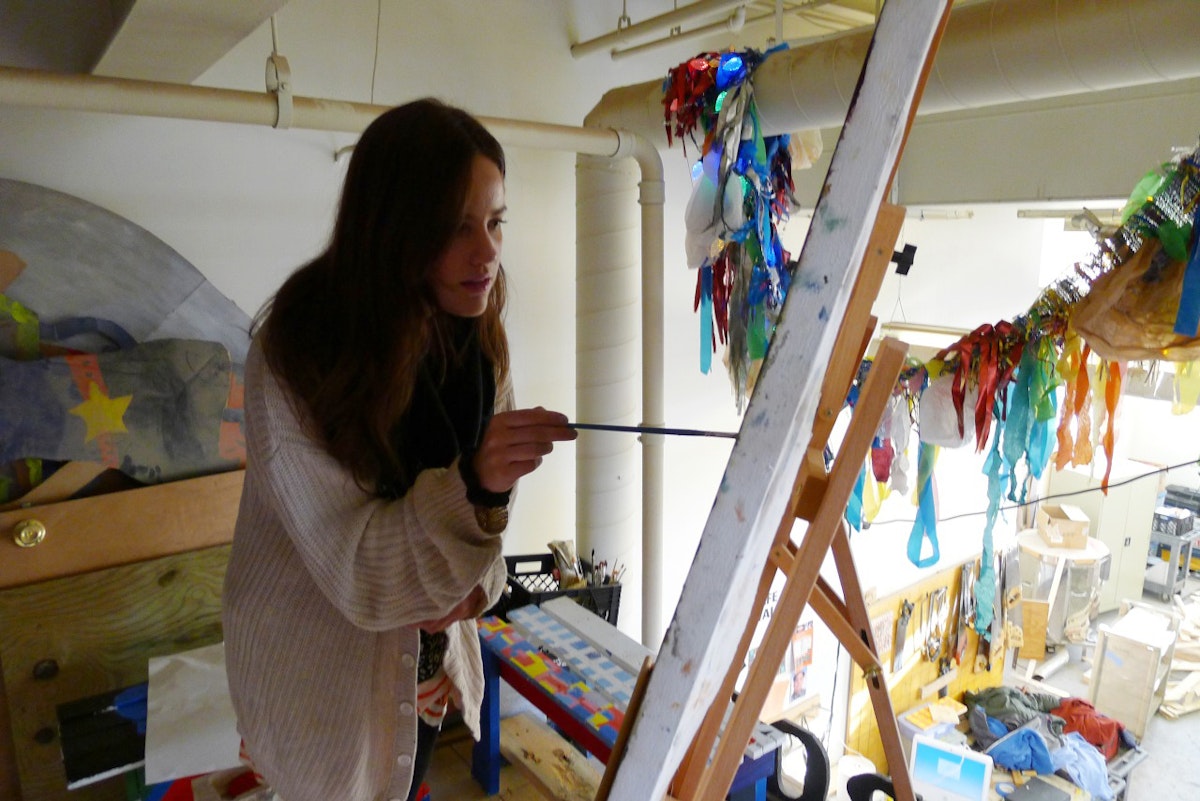
Tell me about your move to Detroit.
I moved to Detroit shortly after I graduated from Stamps in 2013. At Stamps I had pursued large-scale oil painting, fiber art, installation, and sculptural assemblage.
My work has always been about my relationship with the spaces around me, and Detroit was like no other place I’d ever lived before. The places I encountered in the city were new, but also old, and empty, but also full of energy, of synthesis, and new life. The urban landscape was like a painting, whose burnished patinas and crumbling layers were perpetually in a state of unrest. The feeling of alienation and disjuncture I associated with these relationships pushed me into the realm of community engagement and education.
How did you get connected with Detroit Community High?
I began working with Detroit Community High (DCH) this past fall, in collaboration with Stamps Professor Nick Tobier’s Detroit Connections: Change By Design class. I set up a studio space in the loft of art teacher Ms. Labbe’s classroom, affectionately referred to as “Paula La-La Land”, to share the kind of work I do with the students, as well as elicit dialogue and critique from them. In January, Ms. Labbe was assigned to teach art in the connected elementary school, and I was invited to take over her high school classes and continue my work for the semester.
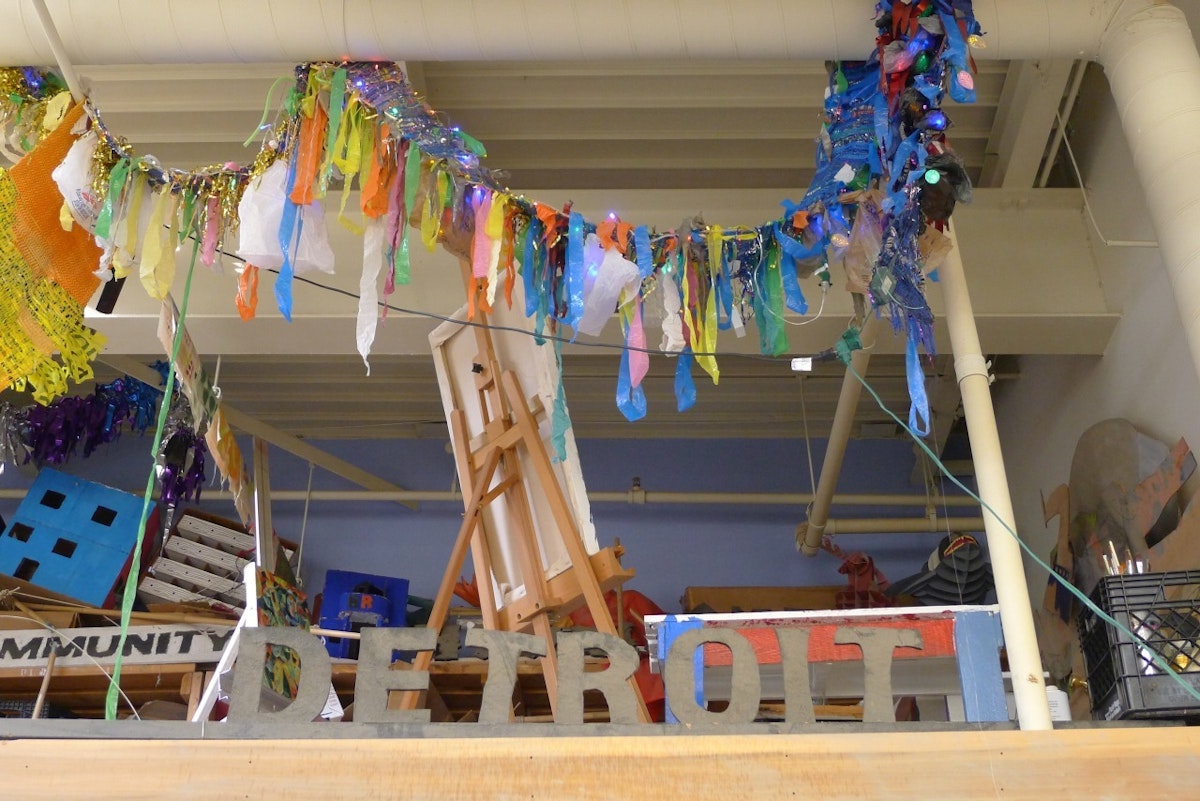
How does your own studio work influence how you teach in the classroom?
I like to bring the DIY mentality of my studio practice into the classroom. Our mantra is “art is anything and everything.” Limitations of supplies become opportunities for meaningful creations out of unconventional materials. An old t-shirt can become a tapestry, a discarded kitchen cabinet could make a great painting; perception is reality. Whether or not my students pursue the arts outside of my class, I want them to leave having developed two key abilities — ample critical thinking skills and the capacity to collaborate. Also, being able to compromise and think outside the box are two of the most important skills to apply to all facets of life.
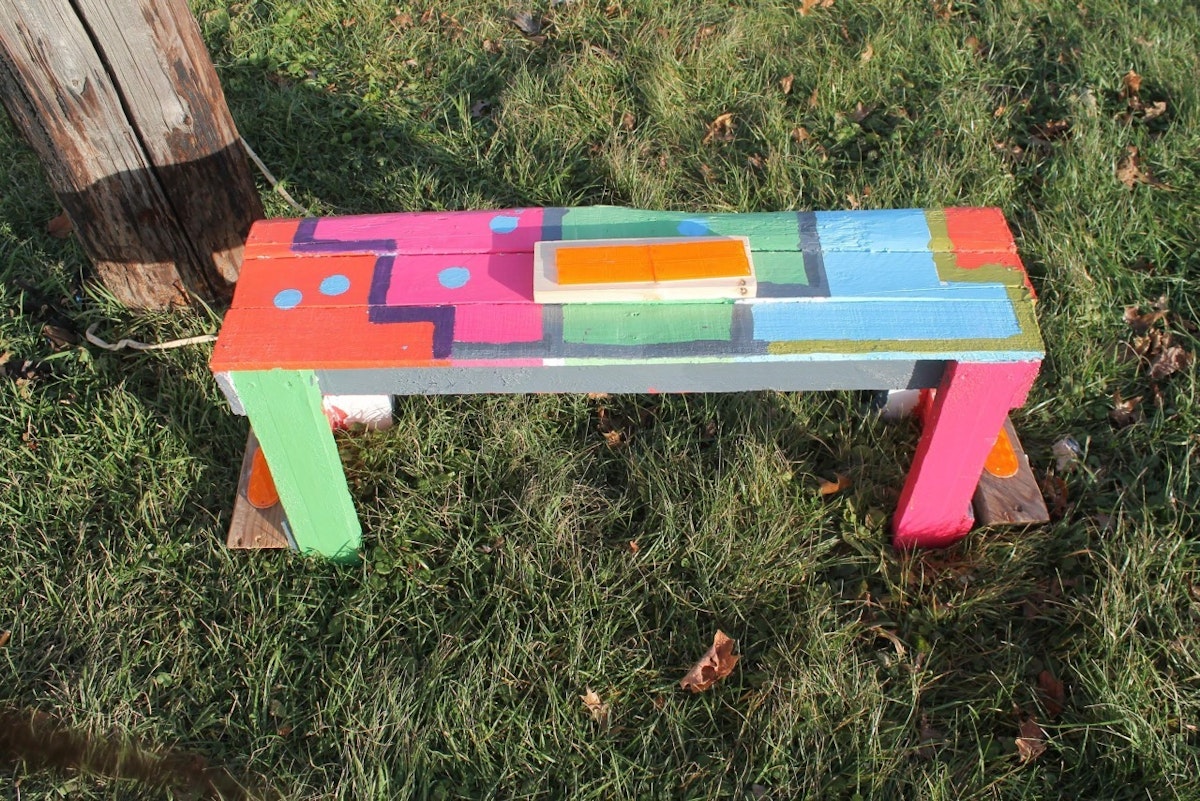
How is teaching influencing your own studio work?
Instead of creating works that encapsulate my own experiences on a two-dimensional plane, I now strive to create experiential environments. This past November, I had a solo exhibition in a warehouse space in Detroit, featuring many fiber and found object installations. Some of that work for the exhibit I had actually created in my studio in Ms. Labbe’s class, which I think helped create a meaningful experience for the viewer. I’ve also begun using far more glitter and pom poms, and incorporating children’s crafts in my work. There’s something about them which is very rhythmic, methodical, and therapeutic. I also recently had a solo exhibition in Houston, Texas, titled It Is What It Needs To Be, in which I encouraged my impulse to play and experiment, to be childlike with materials.
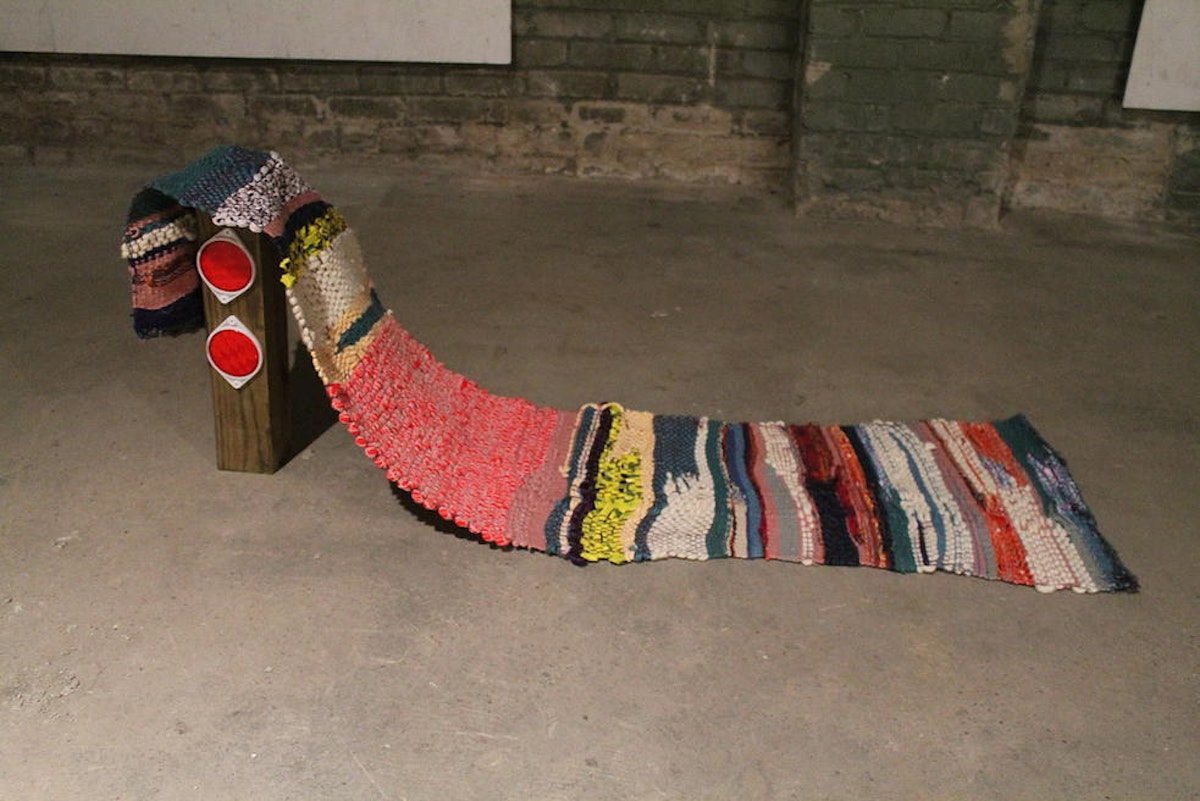
Would you consider yourself a “teaching artist”?
Yes, but not in the traditional sense of the term. I don't consider teaching as just a day job to support my studio practice, but rather an integral influence of my work. The vocations of educator and artist are not mutually exclusive in my mind. I see my role as a teacher as being a collaborative mentor.
Teaching for me is an opportunity of continuing education; I learn through sharing what I know with my students. I intentionally expose them to my work by utilizing the classroom for my own experimentation, as well as collaborate with them on pieces. It is important for them to be exposed to what young artists make and do in Detroit, and see that art is accessible. They influence my practice just as much as I do theirs.
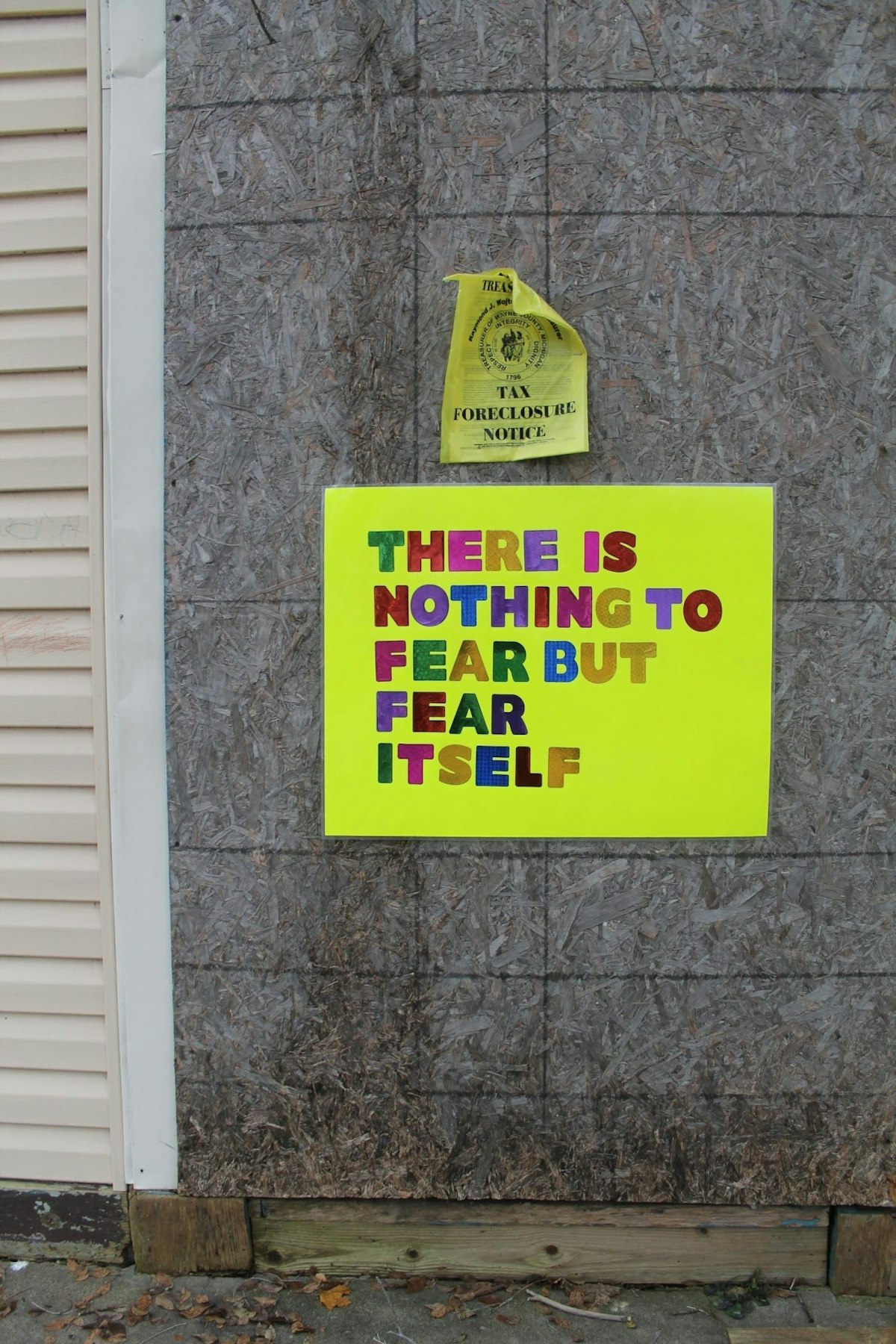
How has working at the school influenced your relationship with Detroit?
I am a very curious person and have found the best way to learn about the world is to physically put myself into a space or community and observe. Ms. Peoples, the HR director at DCH, describes Detroit Community Schools as being “the eye of a hurricane” (the school’s team is known as the “Hurricanes”) – a safe haven for students from the often tumultuous and unstable environment outside of school. “The eye” has been an extremely welcoming community. I’ve learned just as much, if not more, from my students as they have from me. We all come from different backgrounds. I have many experiences that I can share with them, and they with me. We are all united by the common experience which we share together at DCH.
How has the Michele Schara Artist In Residence opportunity impacted your launch as an artist after Stamps?
I am extremely thankful for my experience as a Michele Schara Artist in Residence. As a young graduate, the residency gave me ample funding and a platform to realize my community-based works. I’ve found that the residency, and my subsequent position as the new art teacher at Detroit Community High, has helped my practice to become more interactive, playful, and multifaceted. There’s a stigma in the art world that those who don’t make it as an artist, teach. Why can’t we do both? I’m not trying to take over the world, just change it.
What sort of projects do you have on the horizon?
An upcoming collaborative project we’ll be working on this semester is I Love My Canton Soccer Girls, a quilt which will be made from tapestries woven on cardboard looms from all of our old high school sports t-shirts, and other reclaimed fiber. I will do a similar project with students in Arusha, Tanzania this summer, and will create a large quilt from all the tapestries.
We will also be doing a project called Pothole Prevention, which will be a performance, installation, and act of civil service of sorts, in which we’ll fill potholes in the surrounding Brightmoor neighborhood with unconventional materials, such as resin, glitter, and gummy bears. Our final project of the year will be a collaborative installation in partnership with the DCH music department, for their performance at the Music Hall downtown, which will later be exhibited at the Carr Center in Detroit.
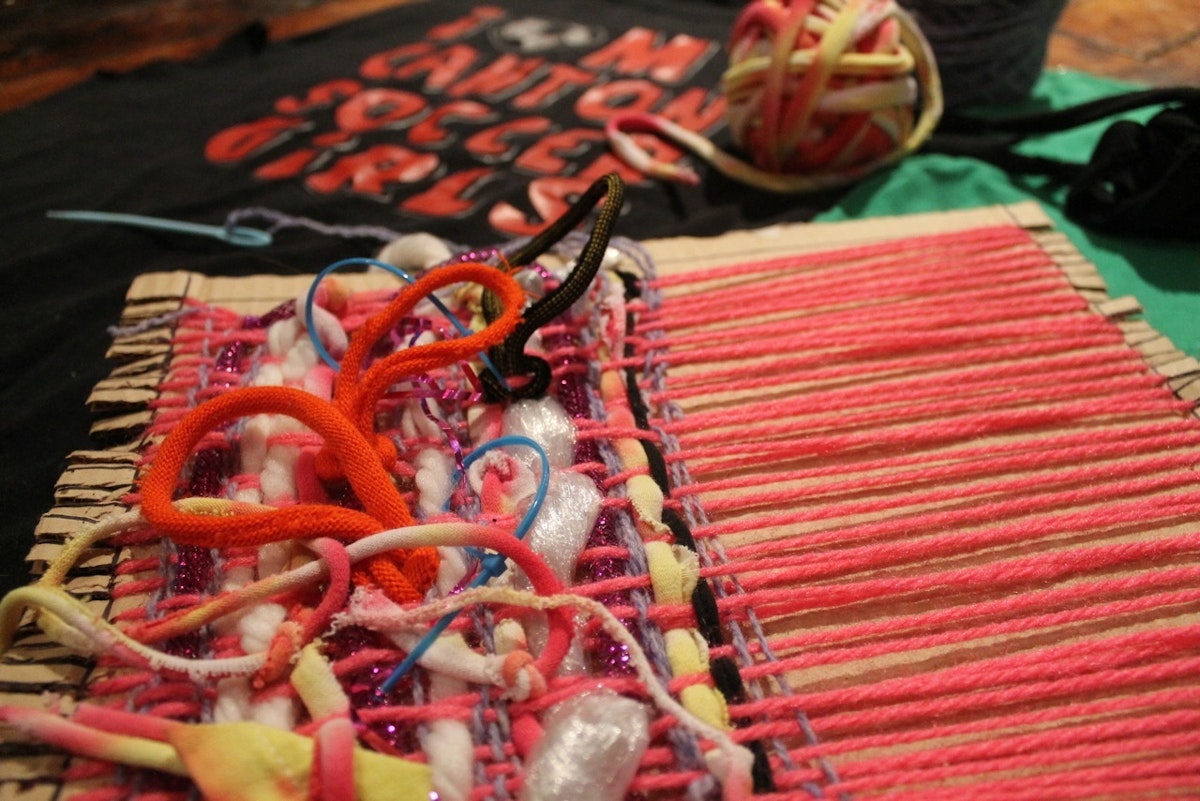
Paula Schubatis is currently raising funds for art supplies for her classroom. If you’re interested in helping her, visit her fundraising page.